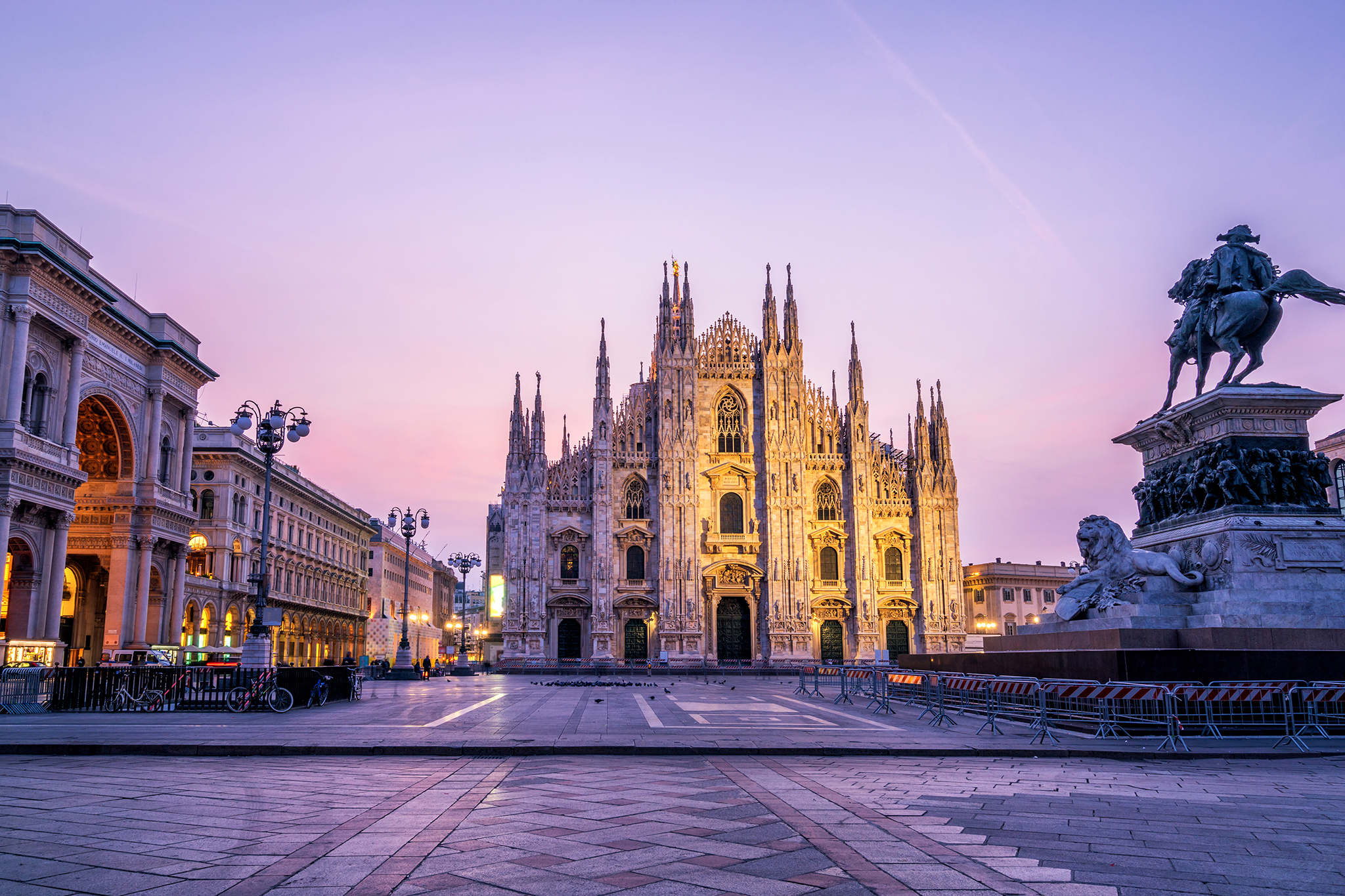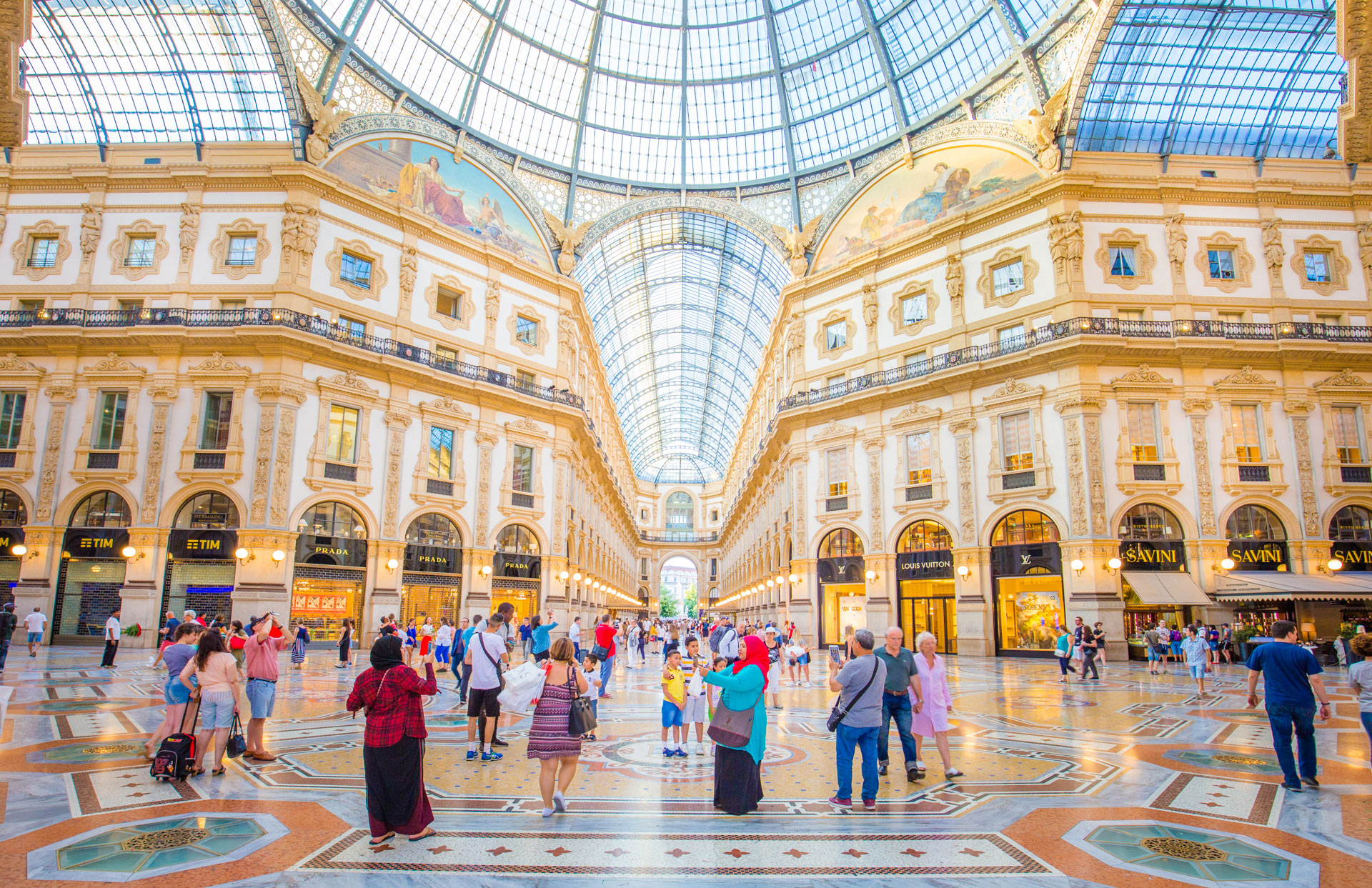
Milan, the undisputed capital of fashion and design, is a city that effortlessly blends its rich historical tapestry with a pulsating contemporary spirit. More than just a runway for haute couture, Milan is a vibrant metropolis brimming with artistic masterpieces, architectural marvels, a sophisticated culinary scene, and a palpable energy that captivates every visitor. From the awe-inspiring Duomo to the hidden courtyards of its ancient palazzi, Milan offers a multifaceted experience that appeals to history buffs, art enthusiasts, gourmands, and trendsetters alike.
A Glimpse into Milan’s Storied Past
Milan’s history is a long and illustrious one, stretching back to its founding by the Celtic Insubres around 600 BC. The Romans conquered the region in 222 BC, and Milan, then known as Mediolanum, became a significant administrative and economic center. It even served as the Western Roman Empire’s capital for a period. The city flourished during the Middle Ages, becoming a powerful city-state under the rule of families like the Visconti and later the Sforza. It was during this era that Milan witnessed the construction of its iconic Duomo and the artistic brilliance of Leonardo da Vinci, who spent his final years here.
Related Articles about Milan: A Renaissance of Style, History, and Culinary Delights:
- Amsterdam: A Tapestry of Canals, Culture, and Charm
- Argentina: A Tapestry of Passion, Culture, and Untamed Beauty – Your Ultimate Travel Guide
- Iceland: A Land of Fire and Ice, Adventure and Serenity
- Austria’s Enduring Charm: A Grand Tour of Its Best Tourist Attractions
- Vietnam: A Journey Through History, Culture, and Breathtaking Beauty
The Renaissance saw Milan solidify its reputation as a center of art and culture. The French and Spanish then vied for control, leaving their mark on the city’s architecture and governance. The Napoleonic era brought further transformations, and by the 19th century, Milan had become a crucial hub for industry and finance, a role it continues to play today. The 20th century brought both devastation during World War II and a subsequent period of remarkable reconstruction and economic growth, solidifying its status as a global fashion capital. This layered history is evident in every cobblestone street and grand piazza, offering a constant dialogue between past and present.
Unveiling Milan’s Main Attractions
Milan’s allure lies in its diverse array of attractions, each offering a unique window into its soul.
1. The Magnificent Duomo di Milano: No visit to Milan is complete without marveling at the Duomo, a Gothic masterpiece that dominates the city’s skyline. This colossal cathedral, built over six centuries, boasts an intricate facade adorned with thousands of statues and spires. Ascend to the rooftop for panoramic views of the city, a truly unforgettable experience. Inside, explore its vast nave, admire the stained-glass windows, and discover the crypt.
2. Galleria Vittorio Emanuele II: A Gilded Passage: Adjacent to the Duomo, this opulent 19th-century shopping arcade is a testament to Milanese elegance. With its glass-vaulted ceilings, mosaic floors, and elegant boutiques housing luxury brands, it’s a feast for the eyes and a shopper’s paradise. Even if you’re not indulging in retail therapy, a stroll through its grand corridors is a must.
3. Teatro alla Scala: An Opera Lover’s Dream: For centuries, La Scala has been synonymous with opera and ballet excellence. This world-renowned opera house has hosted legendary performances and continues to be a pilgrimage site for music aficionados. Consider attending a performance or taking a guided tour to explore its opulent interiors and learn about its rich history.
4. Leonardo da Vinci’s Last Supper: A Masterpiece of Devotion: Located in the refectory of the Convent of Santa Maria delle Grazie, Leonardo da Vinci’s iconic fresco, "The Last Supper," is a profound artistic achievement. This powerful depiction of Jesus and his disciples has captivated viewers for centuries. Booking tickets well in advance is essential due to its immense popularity.
5. Sforza Castle (Castello Sforzesco): A Royal Residence and Museum Hub: This imposing fortress, once the seat of the Sforza dukes, now houses several important museums, including the Pinacoteca (art gallery), the Museum of Ancient Art, and the Museum of Musical Instruments. Wander through its courtyards, admire the art collections, and imagine the grandeur of its past.
6. Brera District and Pinacoteca di Brera: The charming Brera district, with its narrow cobbled streets, bohemian atmosphere, and independent boutiques, is a delight to explore. At its heart lies the Pinacoteca di Brera, one of Italy’s most important art galleries, showcasing masterpieces by Italian artists like Raphael, Caravaggio, and Bellini.
7. Navigli District: Milan’s Bohemian Waterways: This picturesque district, characterized by its canals, bridges, and historic buildings, comes alive in the evening. Enjoy an aperitivo at one of the many bars and restaurants lining the canals, soak in the vibrant atmosphere, and admire the reflections of the historic architecture on the water.
8. Quadrilatero della Moda (Fashion Quadrilateral): A Designer’s Playground: For those with a penchant for high fashion, the Quadrilatero della Moda is an absolute must. This exclusive district encompasses streets like Via Montenapoleone, Via della Spiga, Via Manzoni, and Via Sant’Andrea, where you’ll find the flagship stores of the world’s most prestigious fashion houses.
9. San Siro Stadium: A Football Fanatic’s Mecca: Home to AC Milan and Inter Milan, the San Siro Stadium is an iconic landmark for football enthusiasts. Take a stadium tour to explore the pitch, the dressing rooms, and the museum, and feel the roar of the crowd that has echoed through its stands.
10. Cimitero Monumentale: An Artistic Necropolis: Often overlooked, the Monumental Cemetery is a breathtaking open-air museum of funerary art. Elaborate tombs and sculptures, created by renowned artists, adorn its grounds, offering a unique and artistic perspective on life and death.
Essential Travel Tips for a Seamless Milanese Adventure
To make the most of your Milanese sojourn, consider these practical tips:
- Book in Advance: For popular attractions like "The Last Supper" and the Duomo rooftop, booking tickets online well in advance is crucial to avoid disappointment and long queues.
- Embrace the Aperitivo Culture: Milan is famous for its aperitivo. From around 6 PM to 8 PM, bars offer a buffet of snacks and small dishes with the purchase of a drink. It’s a delicious and social way to start your evening.
- Comfortable Shoes are Key: Milan is a city best explored on foot. Pack comfortable walking shoes as you’ll be doing a lot of exploring.
- Learn Basic Italian Phrases: While English is widely spoken in tourist areas, knowing a few basic Italian phrases like "Buongiorno" (Good morning), "Grazie" (Thank you), and "Scusi" (Excuse me) will be greatly appreciated.
- Stay Hydrated: Especially during warmer months, carry a reusable water bottle. Many public fountains offer potable water.
- Be Mindful of Pickpockets: Like any major city, be aware of your surroundings and belongings, especially in crowded areas.
- Dress Appropriately for Churches: When visiting churches, ensure your shoulders and knees are covered out of respect.
The Best Time to Visit Milan
Milan experiences distinct seasons, each offering a different charm:
- Spring (April to May): This is an ideal time to visit. The weather is pleasant, the city is blooming with flowers, and there are fewer crowds than in the peak summer months. It’s perfect for walking and outdoor activities.
- Autumn (September to October): Another excellent period, autumn offers mild temperatures and beautiful foliage. Fashion Week in September and Design Week in April are major events, so book accommodations well in advance if you plan to attend.
- Summer (June to August): Milan can get quite hot and humid during the summer. While there are still plenty of activities, expect larger crowds and higher prices. Many locals also leave the city for vacation during August.
- Winter (November to March): Winters are cool and can be damp. However, the festive atmosphere around Christmas, with its beautiful lights and markets, is enchanting. It’s also a good time for bargain shopping during the January sales.
Finding Your Home Away From Home: Nearby Hotels
Milan offers a wide range of accommodation options to suit every budget and preference. Here are a few suggestions categorized by area and type:
Luxury:
- Hotel Bulgari Milan (Quadrilatero della Moda): For unparalleled luxury and impeccable service in the heart of the fashion district.
- Mandarin Oriental, Milan (Quadrilatero della Moda): Chic and sophisticated with a renowned spa and dining options.
- Four Seasons Hotel Milano (Quadrilatero della Moda): Housed in a former 15th-century convent, offering historic charm and modern luxury.
Mid-Range:
- Starhotels Anderson (Near Central Station): Convenient for travelers arriving by train, offering modern amenities and comfortable rooms.
- NH Collection Milano President (Near Duomo): Excellent location with stylish rooms and a rooftop bar offering stunning Duomo views.
- Room Mate Giulia (Near Duomo): A trendy boutique hotel with vibrant decor and a prime location.
Budget-Friendly:
- B&B Hotels (Various locations): Several B&B Hotels offer clean and functional rooms at competitive prices.
- Ostello Bello Grande (Near Central Station): A popular and well-regarded hostel offering dorms and private rooms with a social atmosphere.
- Airbnb: Consider renting an apartment through Airbnb for a more local experience, especially for longer stays.
A Taste of Milan: Local Food to Savor
Milanese cuisine is rich, hearty, and utterly delicious. Beyond the classic Italian dishes, explore these local specialties:
- Risotto alla Milanese: The quintessential Milanese dish, this creamy saffron-infused risotto is a must-try. Its vibrant yellow color and delicate flavor are unforgettable.
- Cotoletta alla Milanese: A breaded veal cutlet, fried to golden perfection, this dish is a Milanese icon. It’s traditionally served without bones, unlike its Viennese cousin, Wiener Schnitzel.
- Osso Buco: Slow-cooked veal shanks braised with vegetables, white wine, and broth, often served with gremolata (a garnish of lemon zest, garlic, and parsley).
- Panettone: While enjoyed year-round, this sweet, yeasted bread studded with candied fruits and raisins is a Christmas staple.
- Cassoeula: A hearty winter stew made with pork, cabbage, and other vegetables, perfect for a cold day.
- Gorgonzola: This famous Italian blue cheese originates from the town of Gorgonzola, near Milan. Enjoy it on its own, with bread, or in a risotto.
- Saffron: As seen in Risotto alla Milanese, saffron is a key ingredient in Milanese cooking, lending its unique color and aroma.
Don’t forget to indulge in the aperitivo experience, where you can sample a variety of small bites and antipasti with your drink.
Navigating Milan: Efficient Transportation Options
Milan boasts an efficient and well-connected public transportation system, making it easy to get around:
- Metro (Metropolitana): The Milan Metro is the most efficient way to travel between major attractions and districts. It has several lines that cover most of the city.
- Trams and Buses: An extensive network of trams and buses complements the metro, providing access to areas not covered by the subway. They offer a more scenic way to see the city.
- Taxis: Taxis are readily available but can be more expensive. Ensure the meter is running.
- Ride-Sharing Services: Services like Uber are also available in Milan.
- Walking: As mentioned earlier, walking is an excellent way to discover hidden gems and soak in the atmosphere of different neighborhoods.
- Bicycle Sharing: Milan has a bike-sharing program, which can be a fun and eco-friendly way to explore, especially along the canals.
Transportation Passes: Consider purchasing a daily or multi-day travel pass for unlimited use of public transportation, which can be more economical for extensive sightseeing.
Milan is a city that continuously reinvents itself while holding true to its rich heritage. It’s a place where centuries of art and architecture coexist with cutting-edge fashion and design, where historical grandeur meets modern dynamism. Whether you’re drawn by the allure of its artistic masterpieces, the excitement of its fashion scene, or the temptation of its delectable cuisine, Milan promises an unforgettable journey that will leave you captivated by its enduring charm and sophisticated allure.








